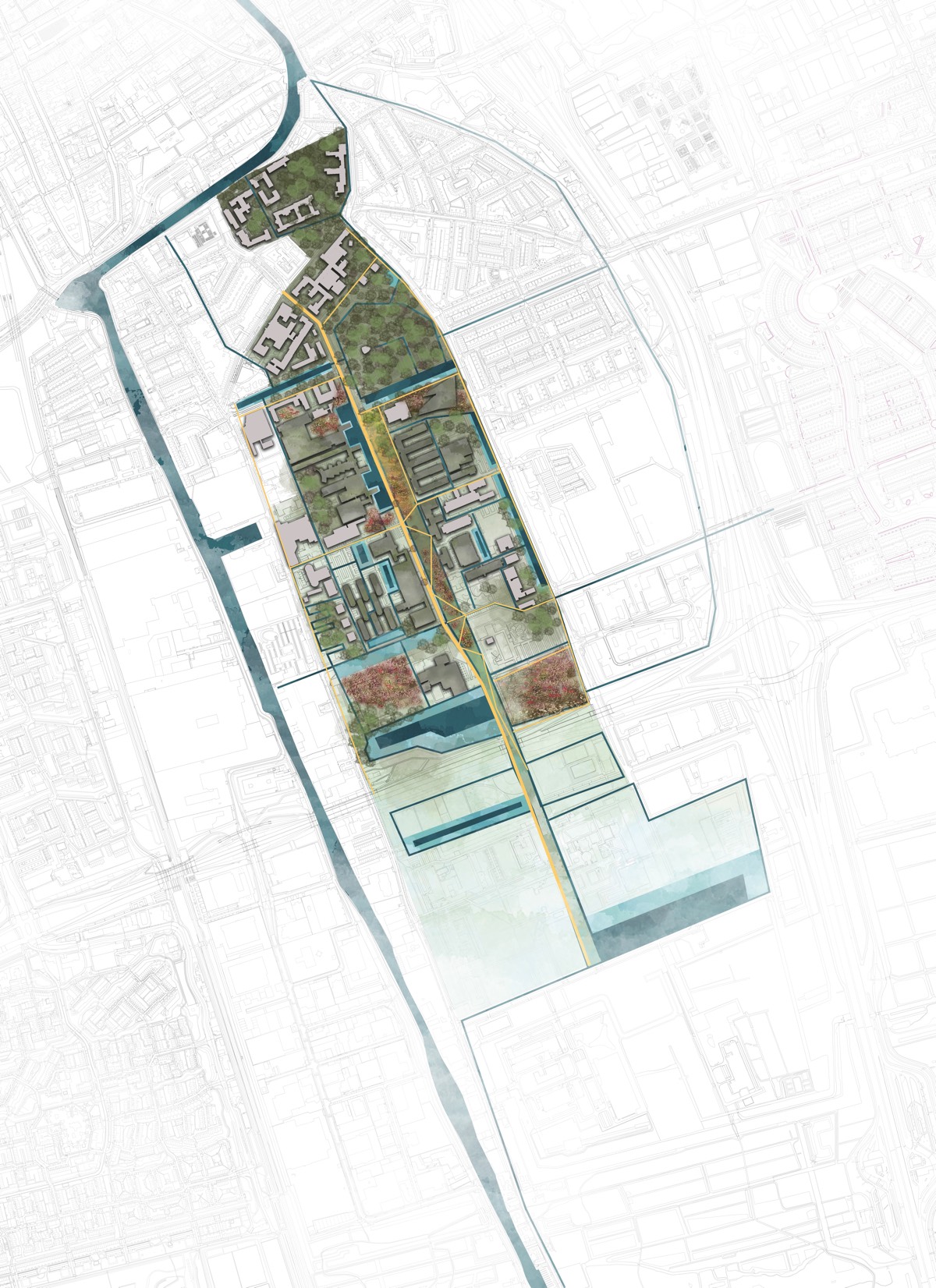Ecocampus
Vision 2050
The campus of the TU Delft is by 2050 transformed into an Eco-campus. Unnecessary pavement made place for a new water infrastructure and vegetation that fits the existing ecosystems in this area. Three habitats are created from North to South: the forest, the meadow and the swamp.
The forestry area helps counteracting the urban heat island effect and air pollution. The increased canopy density leads to shadow, air filtration and is a great habitat for birds and insects. For humans, the forest can be experienced as a place to wander, to walk through and think. The spatial qualities of the forest fit the needs of the students, who are now able to have a relaxing walk during a break.
The Mekelpark is evolved into a wildflower meadow, which attracts pollinators whilst adding aesthetic value to the place. Entrances of many faculties are placed around this park, which makes it a good meeting point. Eco-friendly furniture is made for people to sit, to meet, to gather. The openness of the place makes it easy to see and recognise others. People come here to sit and talk or just watch the cyclist around them.
The swamp area is enriched by a natural swimming pond for the students. Due to the water purification using reeds, the old sports fields turned into the natural environment that provides space for events like introduction activities of student associations or festivals. The Mien Ruys park has become an escape from the big buildings on campus, for humans as well as for other species. The swamp is a place to move, to be moved. The eco-structures, made of reused tiles, offer a home to a lot of insects, while shaping the atmosphere at this spot. Deep within the reeds, a coolness and stillness force you to experience a symbiosis between manmade and nature.
By the philosophy of ‘The art of letting g(r)o(w)’, a campus appeared that not only offers space for the growth of students and the expansion of the University, but also increases biodiversity and becomes a wonderful example of a balanced ecosystem within a manmade environment.
TUTORS
Nico Tillie
Frits van Loon
Saskia de Wit
Pierre Oskam
Students
Anne Leltz
Anne-mieke Boerendonk
Anouk Sanders
David Aldana Trujillo
Dimitrios Trompoukis
Emmanouela Armoutaki
Farnoosh Bazrafkan
Floris Beijer
Francesca Mazza
Gary Gilson
Hanvit Lee
Huiying Liu
Ioanna Kokkona
Jan Houweling
Jelle Dekker
Kailun Qi
Liaw Su Xin
Loen Sung
Marloes Willemsen
Pu Jiang
Ran Yan
Xinyu He
Yann Ninot
Yayun Gao
Yu Zheng
Zhaotun Chen

